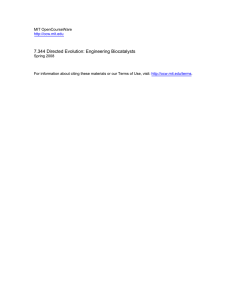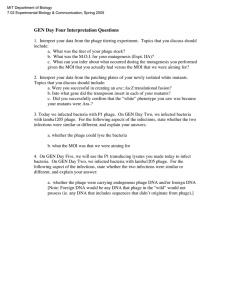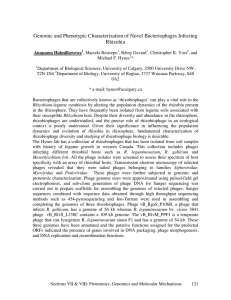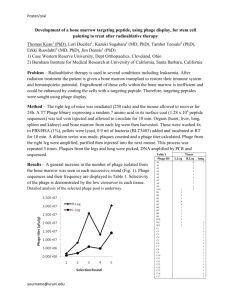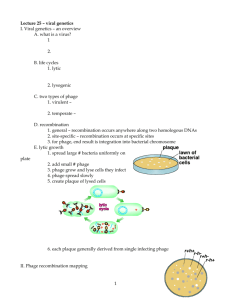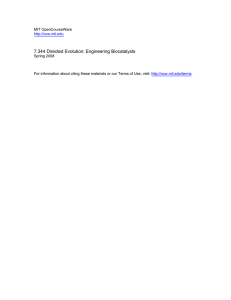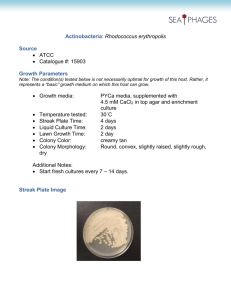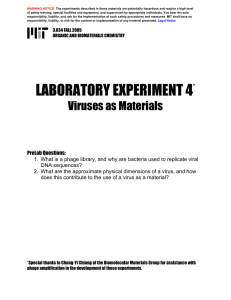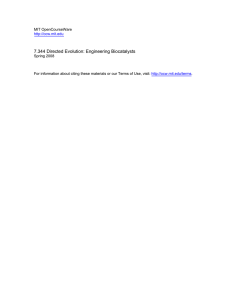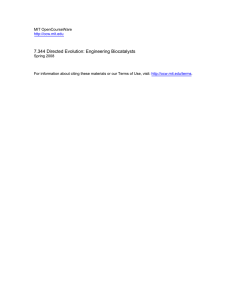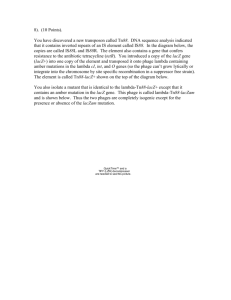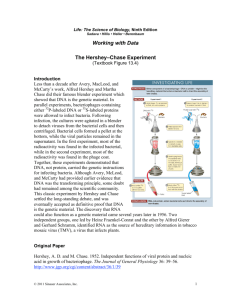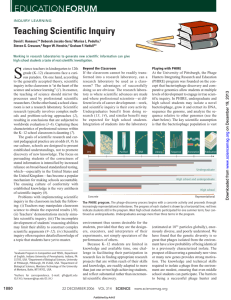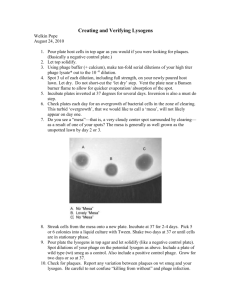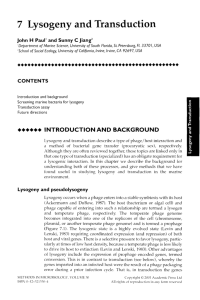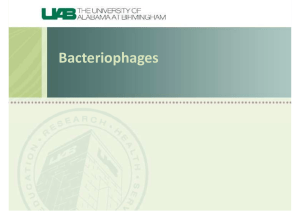Eco-evolutionary feedbacks, adaptive dynamics, and evolutionary
advertisement
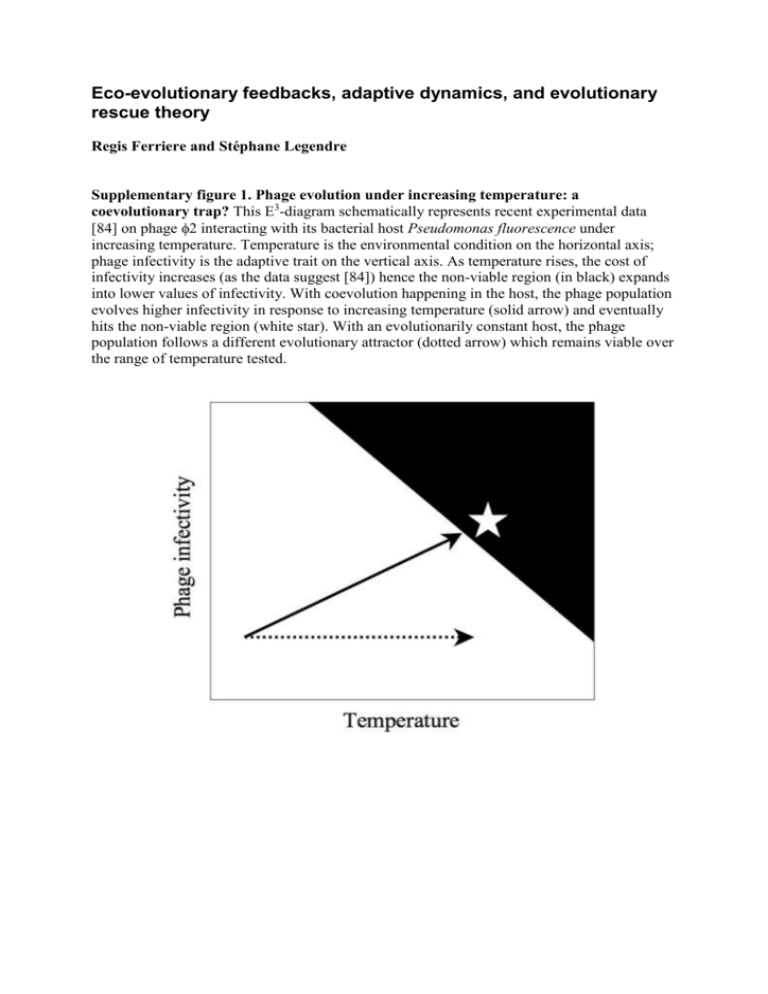
Eco-evolutionary feedbacks, adaptive dynamics, and evolutionary rescue theory Regis Ferriere and Stéphane Legendre Supplementary figure 1. Phage evolution under increasing temperature: a coevolutionary trap? This E3-diagram schematically represents recent experimental data [84] on phage 2 interacting with its bacterial host Pseudomonas fluorescence under increasing temperature. Temperature is the environmental condition on the horizontal axis; phage infectivity is the adaptive trait on the vertical axis. As temperature rises, the cost of infectivity increases (as the data suggest [84]) hence the non-viable region (in black) expands into lower values of infectivity. With coevolution happening in the host, the phage population evolves higher infectivity in response to increasing temperature (solid arrow) and eventually hits the non-viable region (white star). With an evolutionarily constant host, the phage population follows a different evolutionary attractor (dotted arrow) which remains viable over the range of temperature tested.

